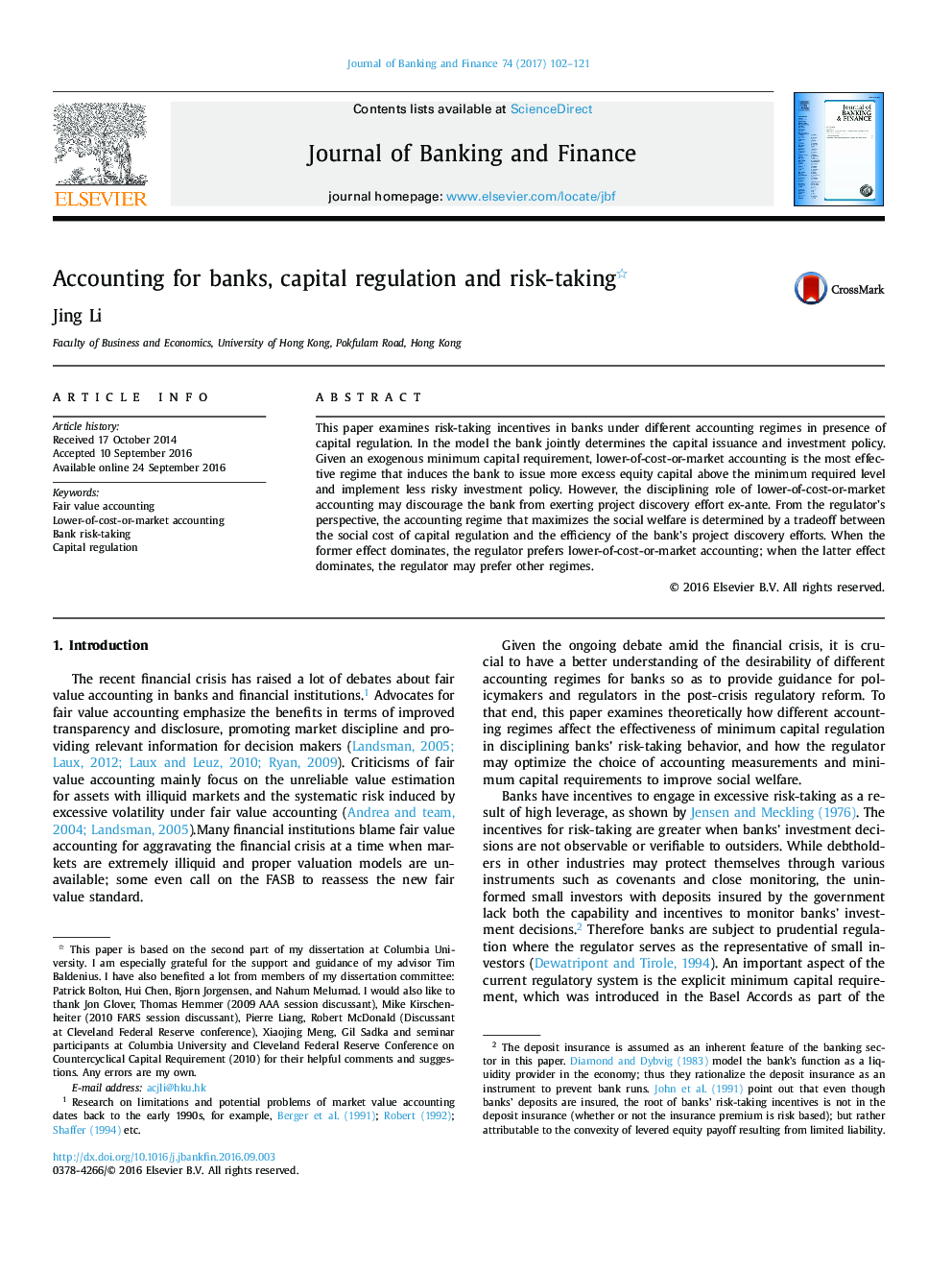| Article ID | Journal | Published Year | Pages | File Type |
|---|---|---|---|---|
| 5088259 | Journal of Banking & Finance | 2017 | 20 Pages |
This paper examines risk-taking incentives in banks under different accounting regimes in presence of capital regulation. In the model the bank jointly determines the capital issuance and investment policy. Given an exogenous minimum capital requirement, lower-of-cost-or-market accounting is the most effective regime that induces the bank to issue more excess equity capital above the minimum required level and implement less risky investment policy. However, the disciplining role of lower-of-cost-or-market accounting may discourage the bank from exerting project discovery effort ex-ante. From the regulator's perspective, the accounting regime that maximizes the social welfare is determined by a tradeoff between the social cost of capital regulation and the efficiency of the bank's project discovery efforts. When the former effect dominates, the regulator prefers lower-of-cost-or-market accounting; when the latter effect dominates, the regulator may prefer other regimes.
